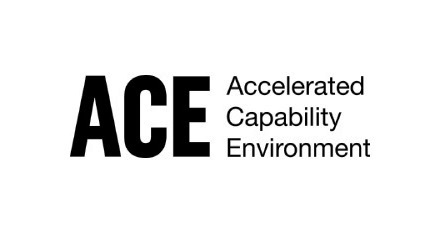ACE proving value of Royal Navy's AI roadmap

Image courtesy ACE / Home Office
The Naval AI Cell (NAIC) is helping the Royal Navy (RN) embrace the transformative power of artificial intelligence (AI) and the benefits it can bring and an initial phase highlighted six priority challenge areas/capabilities that could confirm the value and impact of an aligned transformative roadmap.
The Accelerated Capability Environment (ACE) was asked to carry out focused discovery into two of these capabilities - increased platform availability through predictive maintenance and Counter-uncrewed Air Systems (CuAS) - to prove a set of use cases and suggested next steps in terms of proposed development and data requirements for each.
The predictive maintenance challenge involved the wear and debris team at a naval air squadron. This team contains many experienced engineers who test oil and debris samples from helicopter engines and gear boxes to check for any flight safety or airworthiness issues.
Most samples pass at the first stage but still take a long time to process, and there is also a potential knowledge transfer issue as engineers retire or leave. ACE was asked to explore whether AI or machine learning (ML) could be applied to mark the test data or carry out any part of its analysis, which is largely manual.
A four-week study carried out by Vivace suppliers Mind Foundry and Frazer-Nash across five use cases found that AI/ML techniques including computer vision algorithms, automatic classification of debris imagery and natural language processing could be used for condition assessment of wear debris, bringing time savings. A brief proof of concept was developed to automatically identify the volume of iron particles in oil, which showed how the process of fragment identification and collection could be streamlined.
Overall, the discovery phase found clear potential for innovative use of AI to support airworthiness and increased aircraft availability. Other data, including vibration monitor data, was also identified which could be used to provide additional insights.
Inferring greater meaning from data
A second challenge undertaken by supplier Roke explored how greater meaning can be inferred from signals data from legacy capabilities, and how additional and alternative approaches to combining, processing and making data more accessible can improve the Royal Navy’s capability to detect, classify and track Uncrewed Aerial Systems (UASs). This would increase the exploitation potential and extract more meaningful insights.
Reengineering these platforms can be hugely expensive and so the Royal Navy wanted to see if AI could be used to enhance existing processes, making better use of data that is already collected. This work resulted in the development of a framework to combine and process data from complex platforms using additional and alternative approaches, which will improve the Royal Navy’s capability to counter threats posed by UASs.
Both discovery workstreams proved the value of having the AI roadmap and associated investment in place, that it is robust and determined a set of next steps which can take each use case forward, building the foundations for future operational capabilities.
The Accelerated Capability Environment (ACE) is a unit within the Homeland Security Group, tackling public safety and security challenges arising from evolving digital and data technology.












